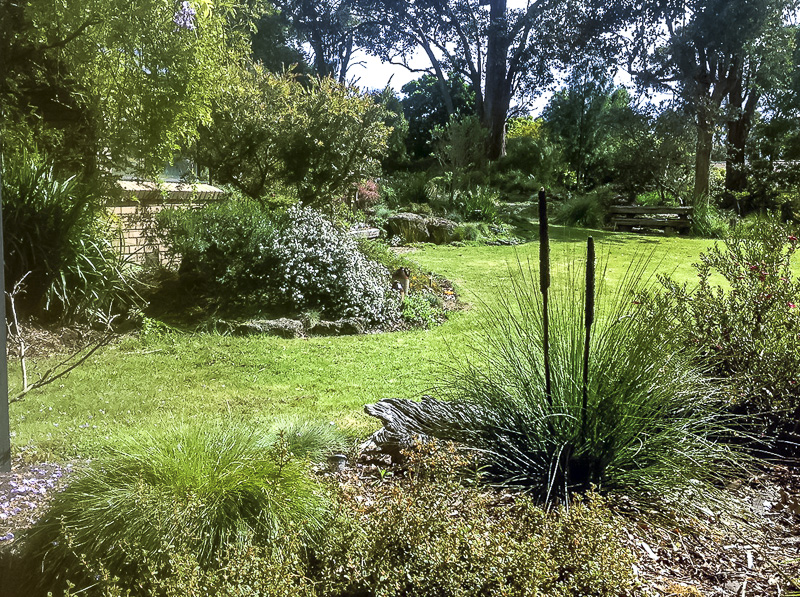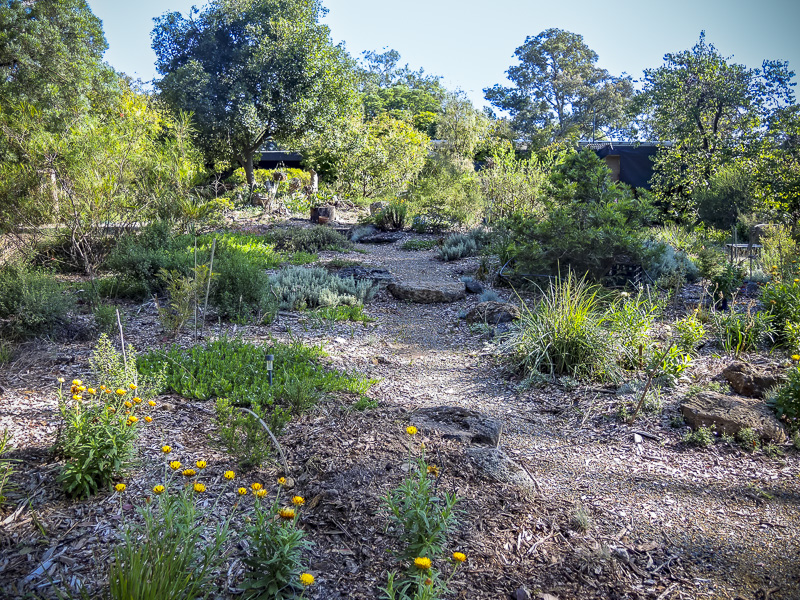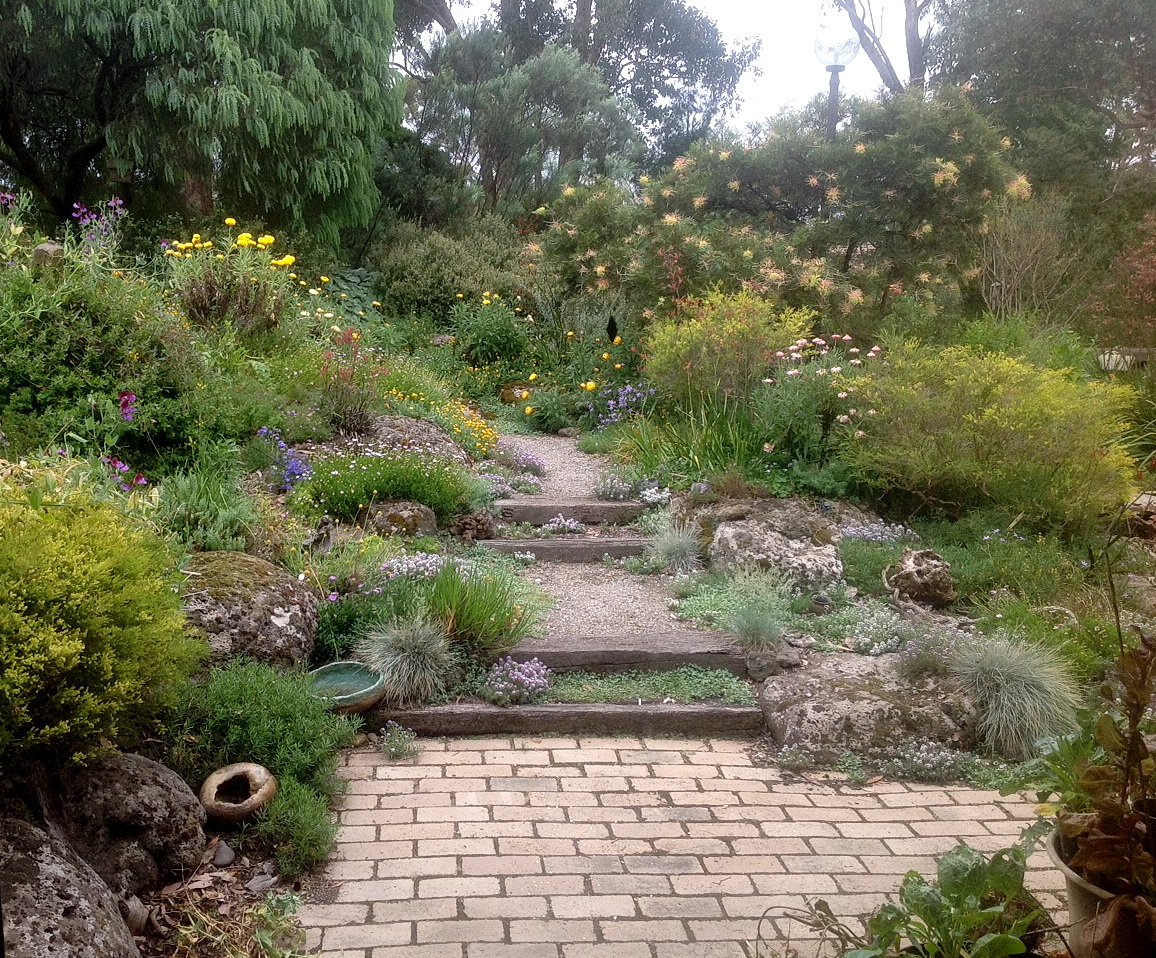Bev Hanson’s garden stays true to native concepts. This story was written by Megan Backhouse for the ‘Melbourne Age’ in August 2022 and forwarded by Bev’s daughter, Christine Zigga.
The staying power of the ‘70’s
If she was starting her garden over, Beverley Hanson says she would not do anything differently. And that’s saying something because she has been tending this patch of earth since 1969. In this age of high-frequency house moving, Hanson has stayed put for 53 years. When she and her husband John bought four hectares in Warrandyte, she was just 27. She had no idea where the boundaries were, but knew exactly the sort of garden she wanted. For a full view of Bev’s garden, see the story on our website here.


Hanson was part of a band of designers and horticulturalists who, in the 1960’s and 70’s started changing perceptions of what gardens could be. At a time when English style borders and hard-line hedges were the prevailing norm, Bev zeroed in on wattles and wildflowers. Her garden shines a light on a natural landscaping style that emerged – more than half a century ago – in the bushy environs of Warrandyte and Eltham.
Opening a window onto the world of Ellis Stones
And in a sense, it also opens a window onto the work of Ellis Stones. Ellis was one of the pioneers of this creative movement, who Hanson names as her biggest influence. Bev worked with Ellis Stones for five years in the 1960’s. His way with rocks, water and native plants not only permeated her own garden but also the many gardens she went on to design in her own practice.
Just as Stones was a master at restraint, one of the first things you notice about Hanson’s garden is how unobtrusive it feels. There are few hard structures, no dramatic pruning and an overall atmosphere of calm. The landscaping around the house has been fashioned into a series of naturalistic garden “rooms”, permeated by winding paths that gradually lead out into the wider more forested parts of the block.


A garden that merged into the indigenous bush
While Bev has included some exotic plants, including Camellias, Rhododendrons and Wisteria close to the house, her main aim was to make a garden that gradually merged with the indigenous bush. Her advice to anyone embarking on a similar project is to take your time and “tread carefully”. “Don’t immediately bring in bulldozers and other equipment that scrapes the ground floor but wait and see what plants come up.”
The next step is to think about the trees you want and where. “They are the important things because they are going to be there forever. You also need to get rocks, steps and hard landscaping in. I call that the backbone and, if you get it all right at the start, it shouldn’t need changing.” It also helps if you have the ability to look at a parcel of land and imagine how it will look once landscaped.
Early influences
She grew into her Warrandyte land, which although cleared in the 1850’s had retained intact many of its ground floor plants. In her first seasons on the property, Bev watched in wonder as 27 different types of ground orchid appeared, an expanse of chocolate lilies (Arthropodium strictum) erupted, carpets of Hardenbergia spread and other local plants flourished.
Decades of gardening
Over the decades since, the Hanson’s kept weeding the more bushy parts and generally kept close tabs on the garden she made around the house they built in 1972. It’s been a long and rewarding experience. While her age, a bad back, and the fact that her husband is unwell, now limits how much gardening she can do and she has started to employ people to help, she is still pulling weeds and striking cuttings of paper daisies in her kitchen.
“If I have a bit of time and something needs doing, I will do it. I would much rather be out there than here, in the living room. I just love the outdoors. I could not live without a garden. But not many 27-year-olds embark on one of this scale now.”

 Australian Native Plants Society (Australia)
Australian Native Plants Society (Australia)